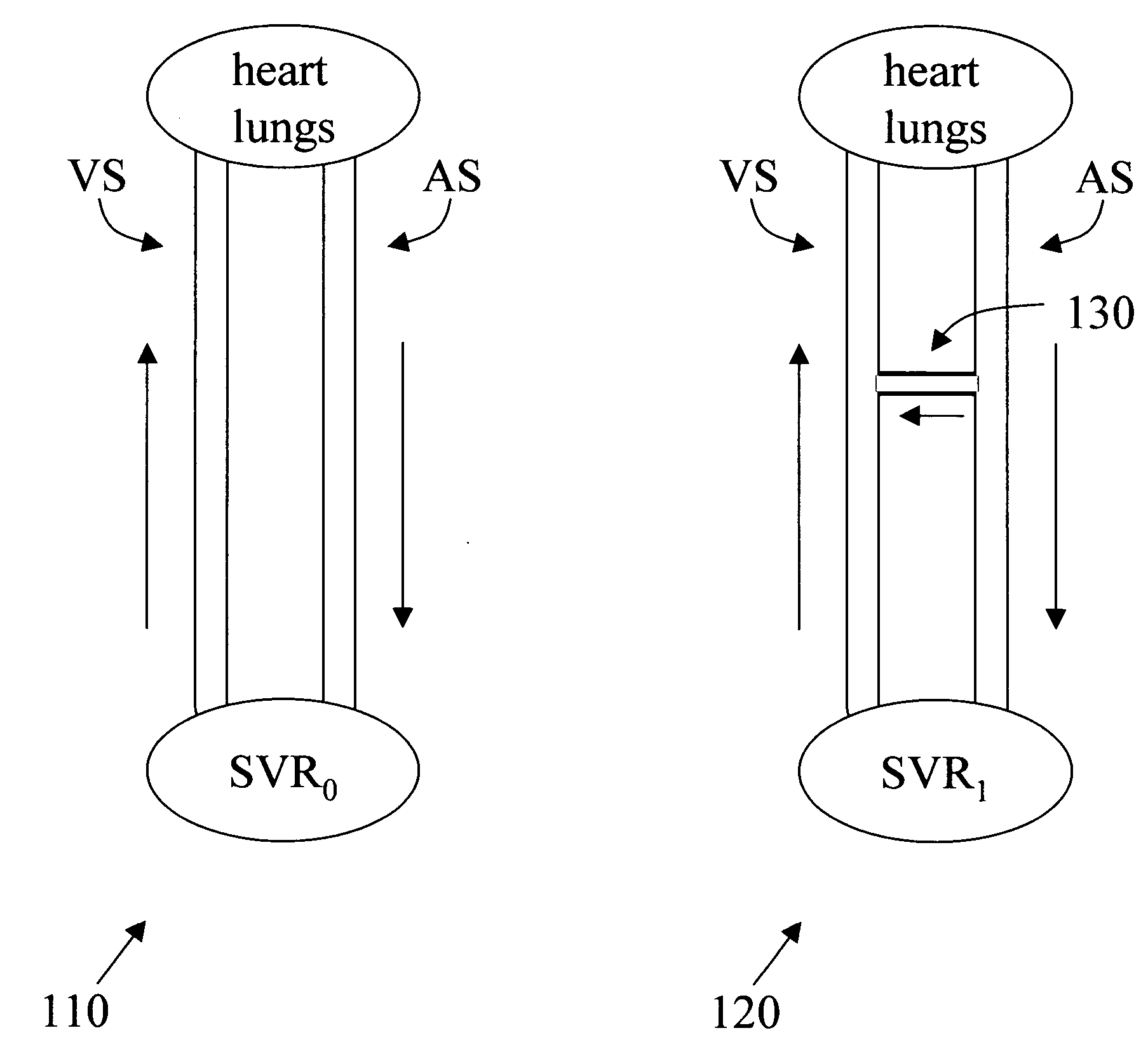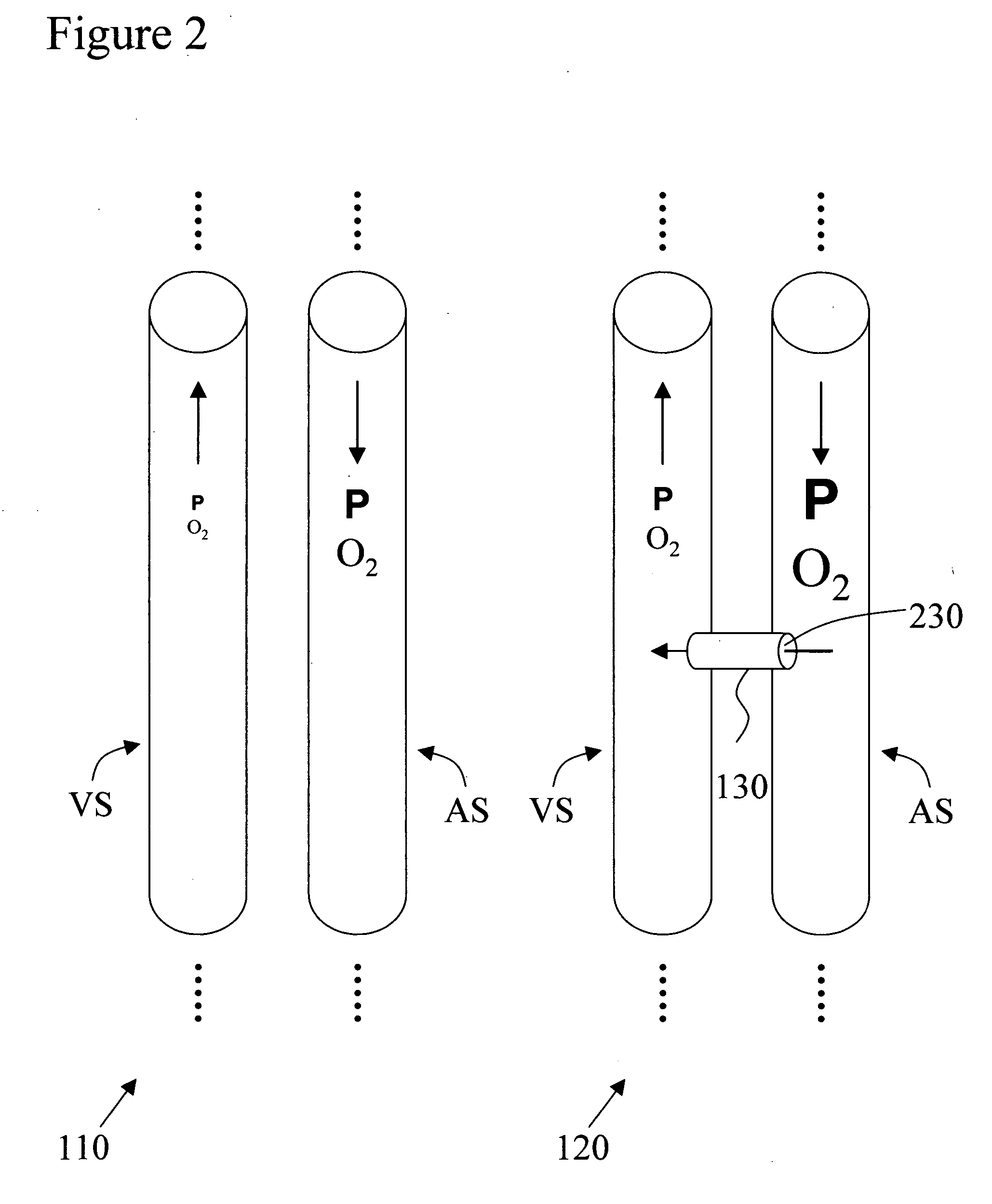Implantable arterio-venous shunt devices and methods for their use
a technology of arteriovenous shunt and shunt tube, which is applied in the direction of blood vessels, catheters, diagnostic recording/measuring, etc., can solve the problems of lung over-inflation, lung over-inflation, and shortness of breath, so as to increase the mean or average partial pressure of blood oxygen (pao2), reduce the mean arterial pressure, and increase cardiac output
- Summary
- Abstract
- Description
- Claims
- Application Information
AI Technical Summary
Benefits of technology
Problems solved by technology
Method used
Image
Examples
Embodiment Construction
[0019] The invention provides implantable arterio-venous shunt devices and methods for using such devices. The shunts of the invention divert a portion of the patient's blood from the high-pressure arterial circulatory system to the lower-pressure venous circulatory system. The shunt device may be implanted between an artery and a vein, for example between the aorta and the inferior vena cava. The shunts are adapted for implantation into a human or animal subject for treating chronic obstructive pulmonary disease (COPD) and other, discussed below. The arterio-venous shunting provided by these shunts has several important physiological effects, including increasing the mean or average partial pressure of blood oxygen (paO2) in a patient's circulation, increasing cardiac output, and reducing the mean arterial pressure. In the case of patients suffering from chronic obstructive pulmonary disease, such increase in blood oxygen relieves the shortness of breath and other symptoms suffered...
PUM
 Login to View More
Login to View More Abstract
Description
Claims
Application Information
 Login to View More
Login to View More - R&D
- Intellectual Property
- Life Sciences
- Materials
- Tech Scout
- Unparalleled Data Quality
- Higher Quality Content
- 60% Fewer Hallucinations
Browse by: Latest US Patents, China's latest patents, Technical Efficacy Thesaurus, Application Domain, Technology Topic, Popular Technical Reports.
© 2025 PatSnap. All rights reserved.Legal|Privacy policy|Modern Slavery Act Transparency Statement|Sitemap|About US| Contact US: help@patsnap.com



